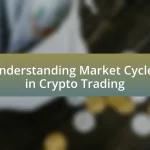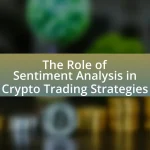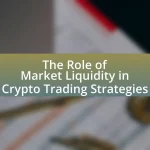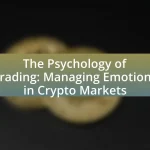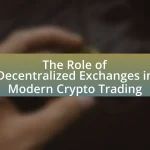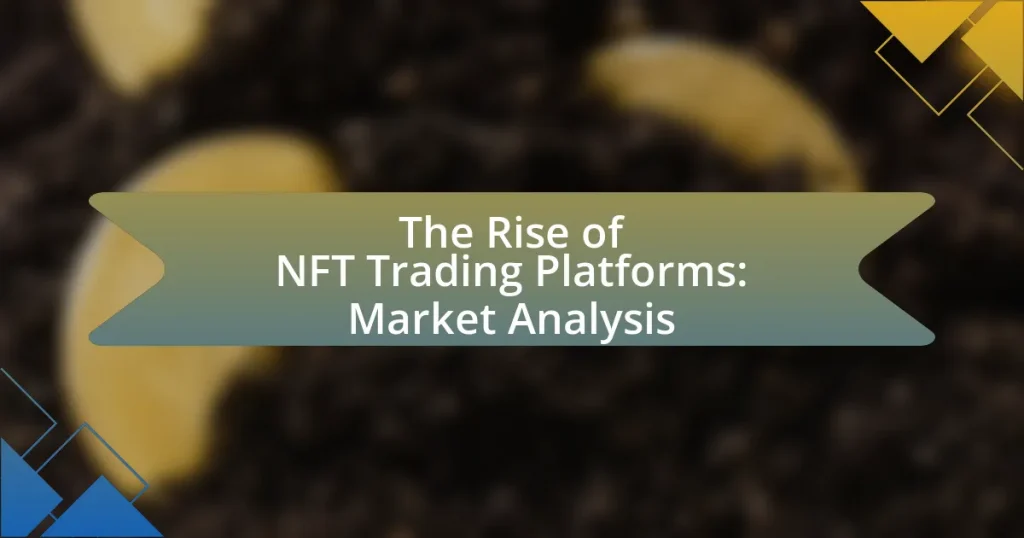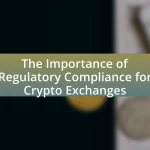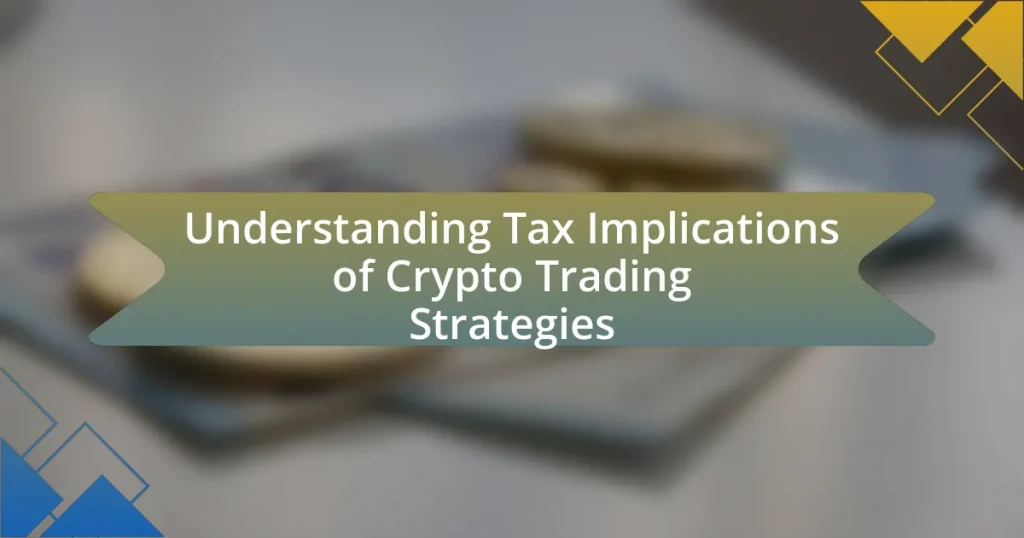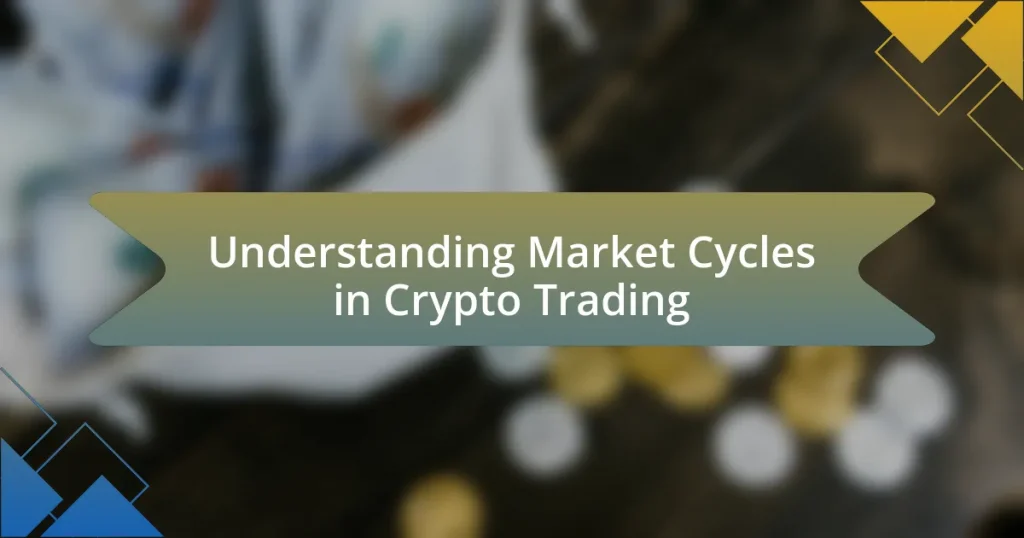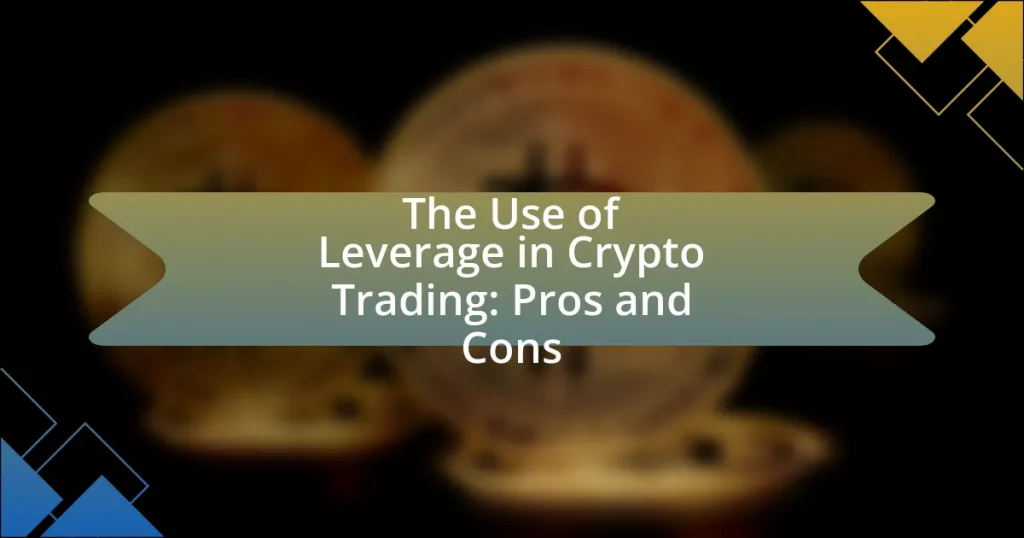NFT trading platforms are online marketplaces that enable the buying, selling, and trading of non-fungible tokens (NFTs), which represent unique digital assets such as art, music, and collectibles. These platforms operate on blockchain technology, ensuring secure transactions and verified ownership through smart contracts. The article analyzes the rapid growth and evolution of NFT trading platforms, highlighting key players like OpenSea and Rarible, market trends, regulatory challenges, and security concerns. It also discusses the implications of these factors for users and the overall market landscape, providing a comprehensive overview of the current state and future potential of NFT trading platforms.
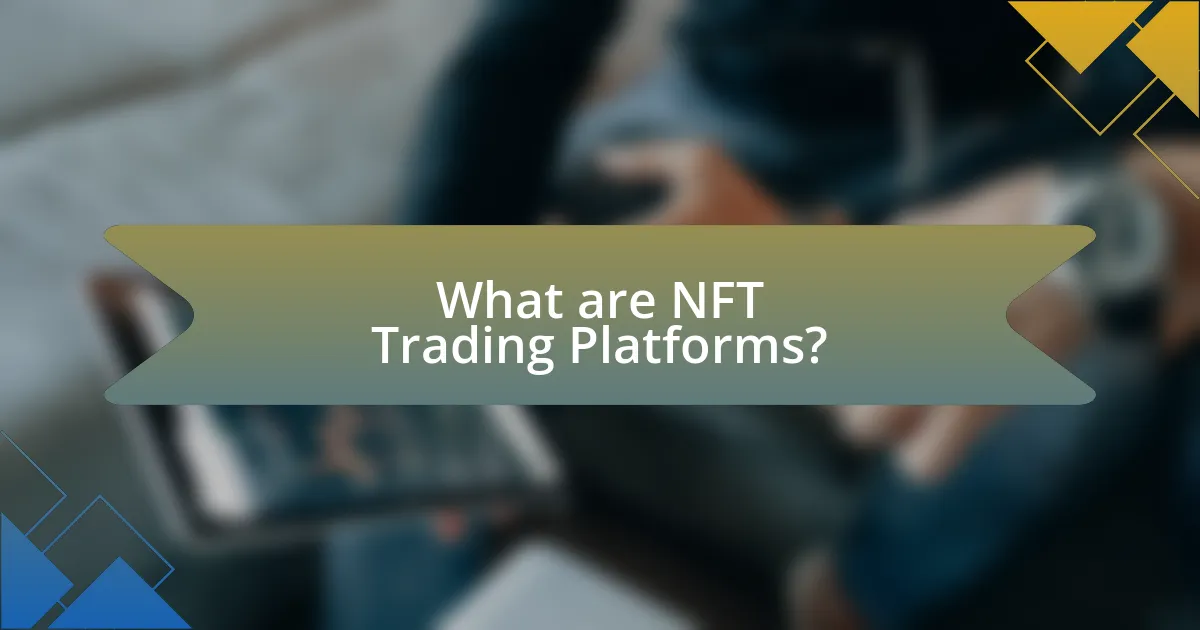
What are NFT Trading Platforms?
NFT trading platforms are online marketplaces that facilitate the buying, selling, and trading of non-fungible tokens (NFTs). These platforms enable users to create, list, and purchase unique digital assets, often representing art, music, collectibles, and virtual real estate. Popular NFT trading platforms include OpenSea, Rarible, and Foundation, which collectively accounted for billions in sales volume in 2021, highlighting their significant role in the digital economy.
How do NFT Trading Platforms operate?
NFT trading platforms operate by facilitating the buying, selling, and trading of non-fungible tokens (NFTs) on blockchain networks. These platforms utilize smart contracts to ensure secure transactions, allowing users to create, list, and purchase NFTs with verified ownership and provenance. For instance, platforms like OpenSea and Rarible enable creators to mint NFTs and set their prices, while buyers can browse listings and make purchases using cryptocurrency. The operation of these platforms is underpinned by blockchain technology, which provides transparency and immutability, ensuring that all transactions are recorded and accessible.
What technologies underpin NFT Trading Platforms?
NFT trading platforms are primarily underpinned by blockchain technology, which ensures the secure and transparent ownership of digital assets. Ethereum is the most widely used blockchain for NFTs, utilizing smart contracts to facilitate transactions and enforce ownership rights. Additionally, IPFS (InterPlanetary File System) is often employed for decentralized storage of the digital assets associated with NFTs, ensuring that the content remains accessible even if the original host goes offline. These technologies collectively enable the creation, buying, and selling of NFTs in a decentralized manner, providing users with trust and security in their transactions.
What are the key features of NFT Trading Platforms?
The key features of NFT trading platforms include user-friendly interfaces, secure wallet integration, diverse asset listings, and robust marketplace functionalities. User-friendly interfaces facilitate easy navigation and transaction processes, enhancing the overall user experience. Secure wallet integration ensures that users can safely store and manage their digital assets, protecting against theft and loss. Diverse asset listings allow users to buy, sell, and trade a wide range of NFTs, from art to collectibles, catering to various interests. Robust marketplace functionalities, such as bidding systems and auction capabilities, enable dynamic trading environments, fostering competition and engagement among users. These features collectively contribute to the growing popularity and usability of NFT trading platforms in the digital economy.
Why have NFT Trading Platforms gained popularity?
NFT trading platforms have gained popularity due to the increasing demand for digital ownership and unique assets in the blockchain space. This surge is driven by the growing interest in non-fungible tokens as a means of representing ownership of digital art, collectibles, and virtual real estate. According to a report by NonFungible.com, the NFT market reached a valuation of approximately $10.7 billion in 2021, reflecting a significant increase from $338 million in 2020. This rapid growth highlights the mainstream acceptance of NFTs, attracting both creators and investors to trading platforms. Additionally, the integration of social media and celebrity endorsements has further amplified visibility and engagement, contributing to the platforms’ rising popularity.
What factors contribute to the growth of NFT Trading Platforms?
The growth of NFT trading platforms is primarily driven by increased consumer interest in digital assets, technological advancements in blockchain, and the expansion of the creator economy. Consumer interest has surged due to the unique ownership and investment opportunities that NFTs provide, with the market reaching a valuation of approximately $41 billion in 2021, according to a report by NonFungible.com. Technological advancements, particularly in blockchain technology, have enhanced security and transaction efficiency, making it easier for users to buy, sell, and trade NFTs. Additionally, the creator economy has flourished, with artists and content creators leveraging NFTs to monetize their work directly, leading to a broader adoption of these platforms.
How do cultural trends influence NFT Trading Platforms?
Cultural trends significantly influence NFT trading platforms by shaping user preferences and market demand. For instance, the rise of digital art and collectibles in mainstream culture has led to increased interest in NFTs, driving platforms to prioritize features that cater to artists and collectors. According to a report by NonFungible.com, the NFT market saw a surge in sales, reaching over $10 billion in the third quarter of 2021, largely fueled by cultural phenomena such as celebrity endorsements and viral social media trends. This indicates that as cultural narratives evolve, NFT trading platforms adapt their offerings to align with these trends, enhancing user engagement and transaction volumes.
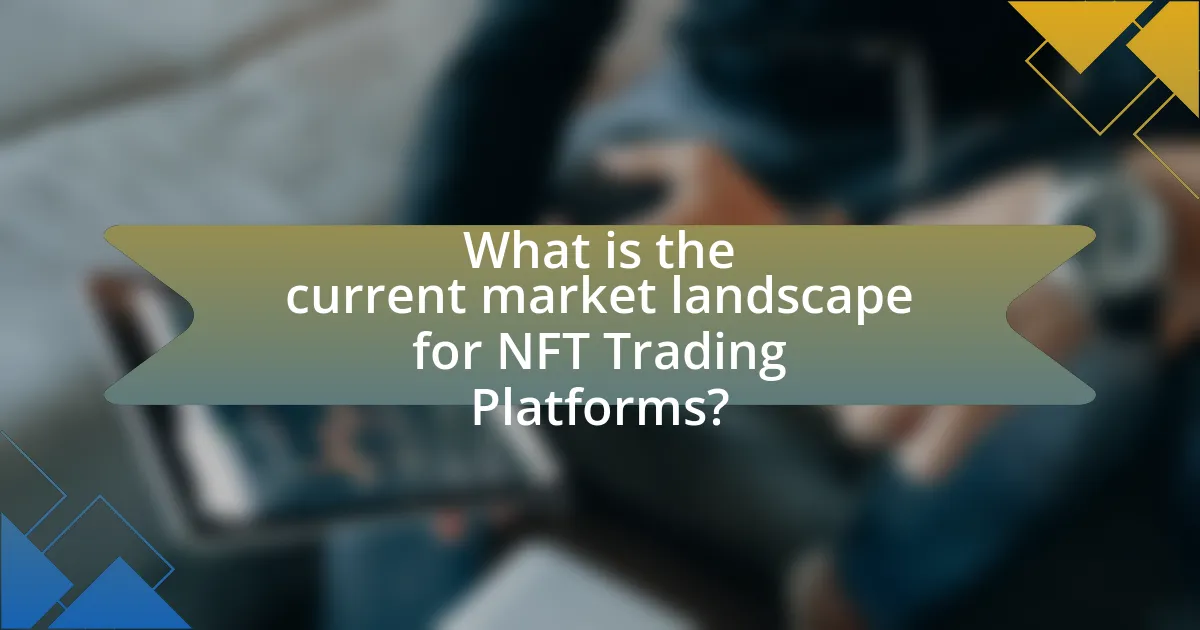
What is the current market landscape for NFT Trading Platforms?
The current market landscape for NFT trading platforms is characterized by rapid growth and diversification, with platforms like OpenSea, Rarible, and Foundation leading in user engagement and transaction volume. As of 2023, the NFT market has seen a resurgence, with total sales reaching approximately $24 billion in 2022, indicating a strong recovery from previous downturns. Additionally, the integration of NFTs into mainstream platforms, such as social media and gaming, has expanded their accessibility and appeal, driving user adoption. The competitive environment is marked by innovations in user experience, such as gas-free transactions and enhanced security measures, which are crucial for attracting both creators and collectors.
How has the market for NFT Trading Platforms evolved?
The market for NFT trading platforms has evolved significantly, transitioning from niche interest to mainstream adoption. Initially, platforms like OpenSea and Rarible emerged in 2017, facilitating the buying and selling of digital assets primarily among crypto enthusiasts. By 2021, the market experienced explosive growth, with NFT sales reaching $10.7 billion in the third quarter alone, driven by increased interest from artists, celebrities, and brands. This surge prompted the development of more user-friendly platforms and diverse marketplaces, catering to various audiences and asset types, including art, music, and virtual real estate. The evolution is further evidenced by the entry of major companies like Adobe and Twitter into the NFT space, enhancing credibility and accessibility.
What are the historical milestones in the NFT Trading Platform market?
The historical milestones in the NFT Trading Platform market include the launch of CryptoKitties in 2017, which popularized NFTs and demonstrated their potential for digital ownership. Following this, the establishment of platforms like OpenSea in 2018 provided a marketplace for users to buy, sell, and trade NFTs, significantly increasing market accessibility. In 2020, the NFT market experienced explosive growth, with sales reaching $250 million, driven by high-profile sales such as Beeple’s digital artwork selling for $69 million at Christie’s in 2021. This event marked a turning point, bringing mainstream attention to NFTs and solidifying their place in the digital economy. Additionally, the introduction of Ethereum 2.0 and Layer 2 solutions improved transaction speeds and reduced costs, further enhancing the NFT trading experience. These milestones collectively illustrate the rapid evolution and growing significance of NFT trading platforms in the digital asset landscape.
What are the current market trends affecting NFT Trading Platforms?
Current market trends affecting NFT trading platforms include increased institutional investment, the rise of fractional ownership, and the integration of NFTs into gaming and metaverse environments. Institutional investment has surged, with companies like Visa and Mastercard entering the space, indicating growing confidence and legitimacy in NFTs. Fractional ownership allows users to buy shares of high-value NFTs, making them more accessible and driving trading volume. Additionally, the integration of NFTs into gaming and metaverse platforms is expanding their utility and appeal, as seen with platforms like Decentraland and Axie Infinity, which have reported significant user engagement and transaction growth. These trends collectively indicate a maturation of the NFT market, attracting diverse participants and enhancing liquidity.
Who are the major players in the NFT Trading Platform market?
The major players in the NFT trading platform market include OpenSea, Rarible, Foundation, and SuperRare. OpenSea is the largest NFT marketplace, facilitating millions of transactions and hosting a vast array of digital assets. Rarible is known for its decentralized approach, allowing users to create and sell NFTs while also participating in governance through its RARI token. Foundation focuses on high-quality art and community-driven sales, attracting prominent artists. SuperRare emphasizes unique, high-value digital art, curating a selection of top-tier creators. These platforms collectively dominate the market, evidenced by their user bases and transaction volumes.
What are the leading NFT Trading Platforms and their market share?
The leading NFT trading platforms include OpenSea, Rarible, and Foundation, with OpenSea commanding the largest market share at approximately 60% as of late 2023. OpenSea has facilitated over $20 billion in transactions since its inception, making it the most prominent marketplace. Rarible follows with around 10% market share, known for its decentralized governance model, while Foundation, focusing on curated art, holds about 5% of the market. These figures reflect the competitive landscape of NFT trading platforms, highlighting OpenSea’s dominance in transaction volume and user engagement.
How do these platforms differentiate themselves from one another?
NFT trading platforms differentiate themselves primarily through their unique features, user interfaces, and target audiences. For instance, platforms like OpenSea focus on a wide variety of digital assets and user-friendly navigation, appealing to general users and creators. In contrast, platforms such as Rarible emphasize community governance and allow users to create and sell NFTs directly, catering to a more engaged and decentralized audience. Additionally, platforms like Foundation curate high-quality art and require artist invitations, thus targeting a niche market of professional artists and collectors. These distinctions are evident in user engagement metrics, transaction volumes, and the types of NFTs offered, showcasing how each platform carves out its own space in the competitive NFT market.
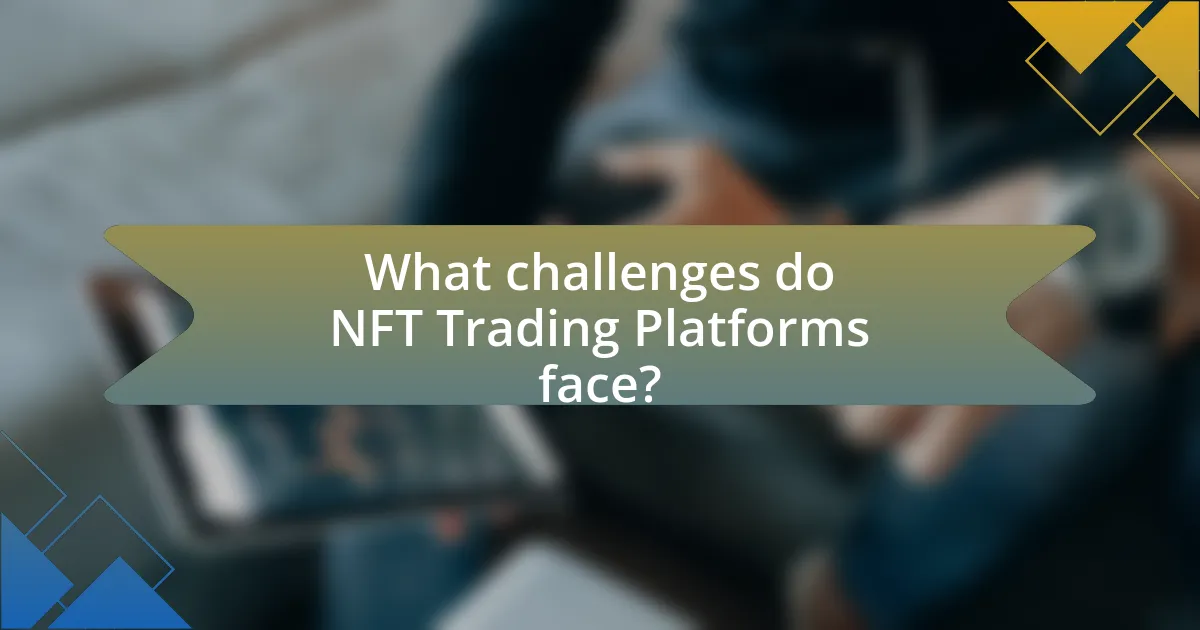
What challenges do NFT Trading Platforms face?
NFT trading platforms face several significant challenges, including regulatory uncertainty, market volatility, and security concerns. Regulatory uncertainty arises from the evolving legal landscape surrounding cryptocurrencies and digital assets, which can impact how platforms operate and their compliance requirements. Market volatility is a challenge as the value of NFTs can fluctuate dramatically, affecting user confidence and trading activity. Security concerns are paramount, as platforms must protect against hacking and fraud, which have been prevalent in the NFT space, with high-profile breaches resulting in substantial financial losses. These challenges collectively hinder the growth and stability of NFT trading platforms.
What regulatory issues impact NFT Trading Platforms?
Regulatory issues impacting NFT trading platforms primarily include compliance with securities laws, anti-money laundering (AML) regulations, and consumer protection laws. Many NFTs may be classified as securities under certain jurisdictions, requiring platforms to register with regulatory bodies like the SEC in the United States. Additionally, NFT platforms must implement AML measures to prevent illicit activities, as highlighted by the Financial Action Task Force (FATF) guidelines, which emphasize the need for transparency in transactions. Consumer protection laws also apply, ensuring that users are informed about the risks associated with NFT investments. These regulatory frameworks are essential for fostering a secure trading environment and maintaining market integrity.
How do regulations vary across different regions for NFT Trading Platforms?
Regulations for NFT trading platforms vary significantly across different regions, reflecting local legal frameworks and cultural attitudes towards digital assets. In the United States, NFT platforms are subject to federal securities laws, which may classify certain NFTs as securities, requiring compliance with registration and disclosure obligations. Conversely, in the European Union, the Markets in Crypto-Assets (MiCA) regulation aims to create a comprehensive regulatory framework for digital assets, including NFTs, focusing on consumer protection and market integrity. In contrast, countries like China have imposed strict bans on cryptocurrency transactions, which extends to NFT trading, limiting the operational scope of platforms in that region. These regulatory differences impact how NFT platforms operate, influencing their compliance strategies and market accessibility.
What are the implications of these regulations for users?
The implications of these regulations for users include increased security and transparency in NFT transactions. Users will benefit from enhanced consumer protections, as regulations often require platforms to implement measures that safeguard user data and funds. For instance, regulations may mandate Know Your Customer (KYC) processes, which help prevent fraud and money laundering, thereby fostering a safer trading environment. Additionally, compliance with these regulations can lead to greater trust in NFT platforms, encouraging more users to participate in the market. This trust is crucial, as a survey by NonFungible.com indicated that 70% of potential NFT buyers prioritize security when choosing a trading platform.
What security concerns are associated with NFT Trading Platforms?
NFT trading platforms face several security concerns, primarily including hacking, fraud, and smart contract vulnerabilities. Hacking incidents have led to significant losses, with reports indicating that over $100 million was stolen from various platforms in 2021 alone. Fraud can occur through phishing attacks, where users are tricked into revealing private keys or sensitive information. Additionally, smart contracts, which govern the transactions and ownership of NFTs, can contain bugs or vulnerabilities that malicious actors exploit, potentially resulting in unauthorized transfers or loss of assets. These concerns highlight the need for robust security measures and user education to mitigate risks in the NFT trading ecosystem.
How can users protect themselves while using NFT Trading Platforms?
Users can protect themselves while using NFT trading platforms by implementing strong security measures, such as using hardware wallets for storing digital assets. Hardware wallets provide a secure environment for private keys, reducing the risk of hacks that can occur on online platforms. According to a report by Chainalysis, in 2021, over $7.7 billion was lost to cryptocurrency theft, highlighting the importance of secure storage solutions. Additionally, users should enable two-factor authentication (2FA) on their accounts, which adds an extra layer of security by requiring a second form of verification. Regularly updating passwords and being cautious of phishing attempts are also critical steps to safeguard personal information and assets.
What measures are platforms taking to enhance security?
Platforms are implementing multi-factor authentication (MFA) to enhance security. MFA requires users to provide two or more verification factors to gain access, significantly reducing the risk of unauthorized access. For instance, platforms like OpenSea and Rarible have adopted MFA, which has been shown to decrease account breaches by up to 99.9% according to a study by Microsoft. Additionally, platforms are utilizing blockchain technology to ensure transaction transparency and integrity, making it difficult for malicious actors to alter transaction records. This combination of MFA and blockchain verification is crucial in safeguarding user assets and maintaining trust in NFT trading environments.
What are the best practices for engaging with NFT Trading Platforms?
The best practices for engaging with NFT trading platforms include conducting thorough research, understanding the platform’s fee structure, and ensuring the security of digital assets. Engaging with reputable platforms that have a strong user base and positive reviews minimizes risks associated with scams and fraud. For instance, platforms like OpenSea and Rarible have established themselves as leaders in the market, providing user-friendly interfaces and robust security measures. Additionally, being aware of transaction fees, which can vary significantly between platforms, helps in making informed financial decisions. According to a report by NonFungible.com, the NFT market saw a transaction volume of over $10 billion in 2021, highlighting the importance of choosing the right platform for maximizing investment potential.

